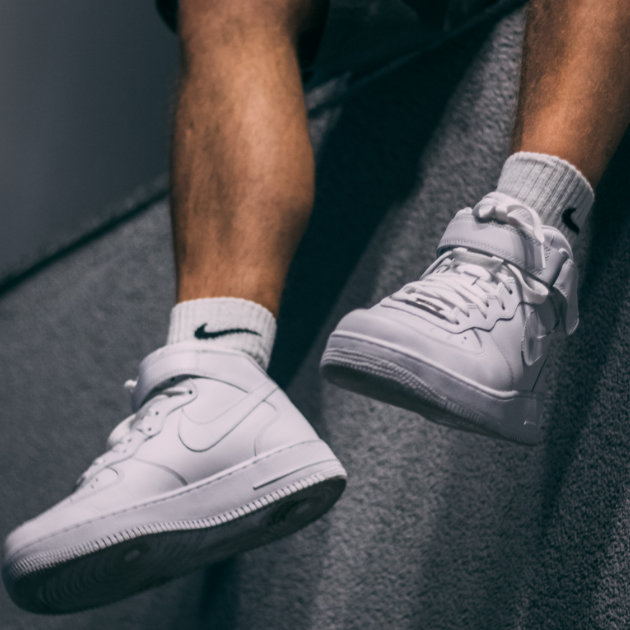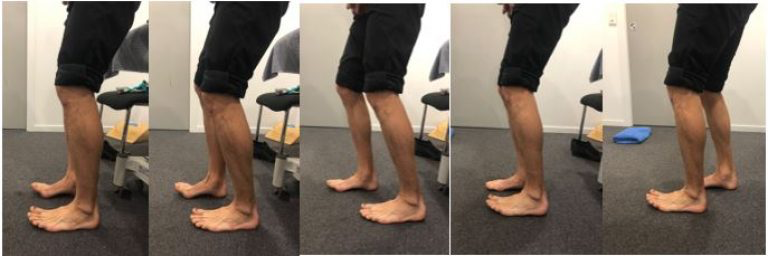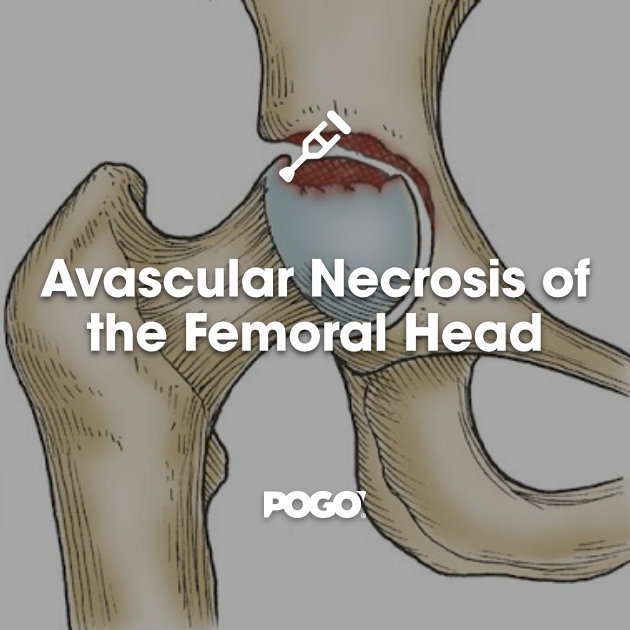A 5 Step Guide To Improve Ankle Mobility

Movement at the ankle joint is vital for walking, running, descending stairs and completion of many strength based exercises. It is one of the main areas to become restricted following injuries such as ankle sprains or with time immobilised in a moon boot. Having reduced ankle dorsiflexion range can result in difficulty maintaining proper form through certain gym activities such as a squat, clean or snatch. This can lead to compensation at the foot, hip or low back, sometimes presenting as pain and injury (1). Runners also need this range to prevent early heel rise and a subsequent increase in loads on the calf and Achilles.
Locally, a lack of ankle dorsiflexion ROM presents as a risk factor for common sports injuries such as Achilles tendinopathy, ankle sprains, and tibial stress fractures (2). Research also indicates an association with proximal injuries such as hamstring strains (3), patella tendinopathy (4) and anterior knee pain (5). Although the exact relationship between a loss of ankle dorsiflexion ROM and injury occurrence is unclear, it has been proposed that it occurs through compensatory movement patterns caused by ankle hypomobility. This will most commonly present as an increase in ankle pronation (or arch rolling inwards) increasing stress on the shin, medial ankle and foot. Alternatively where this strategy is not used their can be a lack of knee flexion during landing, leading to a ‘jarring effect’ or increased hip hinging which can place additional load on the lower back. These strategies can often be necessary or useful, until a time where the compensation strategy cannot keep up with the loads upon it, leading to ‘overload.’ Here’s how you might go about improving your ankle mobility.
1. Assess
Measure your ankle range. Place a ruler perpendicular to a wall. Placing your big toe at the wall or 0 cm mark, try get your knee to touch the wall by bending at the ankle. Your heel needs to remain in contact with the ground. If you can touch the wall with your knee, proceed to gradually move your foot further away from the wall until you find the maximum distance away from the wall you can be, yet still get your knee touch the wall and keep your heel grounded. This measure in cm is your ankle range. This measurement is known as Knee-to-wall. Repeat for both ankles. The second part to assessing range is to notice where your ‘restriction’ lies. So when you have your reached end of range (knee-to-wall score), do you feel a) a tight restriction in your calf, b) restriction in the front of your ankle or c) both. This can tell you that the restriction is more at the back calf muscles and or the front of the ankle joint. Finally you may wish to see if you have any signs of compensation already. Notice how you get to end range, does your knee go over your second toe or will it collapse inwards in order to get more range? We will want to avoid try reduce this position in the coming exercises.
2. Mobilise
We next want to try increase the mobility at the ankle and foot. This is primarily important for those who have restriction at the front (eventually most people will reach this point as they progress). This will take time and need to be gradually progressed over months.
- Banded mobilisations. Set up a band pulling backwards into the front of the ankle joint. Proceed to move you knee over your toes. Place a weight on top of your knee and hold in end range for as long as comfortable. Start with a lighter weight and shorter hold and gradually progress to heavy weights (10kg+) and longer times (10min+), as your foot, ankle and knee allow. Additional mobility can include rolling the arch of your foot with a solid ball.
3. Activation
Activation in End Range. Simple put we want to use the muscle in end of range. Following your mobilisation spend 2-3 min trying to lift your foot whilst in the previous knee to wall position. Your foot will not be able to lift off the ground but you will eventually feel your shin muscles working quite hard. Gradually build up the intensity of trying to lift for 5-10s, and try to gain more range as you relax. We are trying to maximise the new range gained.
4. Strengthen
Strength is a key aspect of increasing range. Anterior strength can help gain posterior length (6). Whilst what is tight (the calf) is often ‘relatively weak’ compared to the demands placed upon it. Remember running requires huge tensile and rate of force development demands, such as the soleus taking loads up to 8 times body weight during running (7).
- Dorsiflexion strength can be gained by performing high volume repetitions of dorsiflexion, such as sitting and tapping your foot, concentrating on the up phase and bringing your toes as close to your shin as possible. Alternatively simple heel walking or a dorsiflexion shuffle walk (below) can be a great way to burn up the anterior compartment of your shin.

- Plantar flexion strength (gastrocnemius and soleus) are the two muscles that make up the calf complex. Tightness in this region can restrict dorsiflexion. To ensure that these tight muscles are not weak muscles, they can be strengthened. Additionally working slowly into end of range during the eccentric component of the exercises can help achieve more range. Two exercises include calf raises, one with a straight knee and one with bent knee calf raises. This should be performed with weight and on a step to allow your ankle to move below horizontal. Here is a demonstration of bent knee calf raises.
More on foot and ankle strength can be found here.
5. Persist
Changing ankle range can take a long time. First it is important to complete a program regularly and consistently, for months. Regularly assess and reassess to check your progress.

Lewis Craig (APAM)
POGO Physiotherapist
Masters of Physiotherapy
Featured in the Top 50 Physical Therapy Blog
References:
- Howe, Louis. (2015). Restricted ankle dorsiflexion: methods to assess and improve joint function. Professional Strength and conditioning Journal.
- Pope, R., Herbert, R., & Kirwan, J. (1998). Effects of ankle dorsiflexion range and pre-exercise calf muscle stretching on injury risk in Army recruits. Australian Journal of Physiotherapy, 44(3), 165-172.
- Gabbe, B. J., Bennell, K. L., Finch, C. F., Wajswelner, H., & Orchard, J. W. (2006). Predictors of hamstring injury at the elite level of Australian football. Scandinavian journal of medicine & science in sports, 16(1), 7-13.
- Backman, L. J., & Danielson, P. (2011). Low range of ankle dorsiflexion predisposes for patellar tendinopathy in junior elite basketball players: a 1-year prospective study. The American journal of sports medicine, 39(12), 2626-2633.
- Mølgaard, C., Rathleff, M. S., & Simonsen, O. (2011). Patellofemoral pain syndrome and its association with hip, ankle, and foot function in 16-to 18-year-old high school students: a single-blind case-control study. Journal of the American Podiatric Medical Association, 101(3), 215-222.
- https://thegaitguys.tumblr.com/post/143110910139/do-you-have-enough-in-the-anterior-tank-dr
- Dorn, T. W., Schache, A. G., & Pandy, M. G. (2012). Muscular strategy shift in human running: dependence of running speed on hip and ankle muscle performance. Journal of Experimental Biology, 215(11), 1944-1956.








